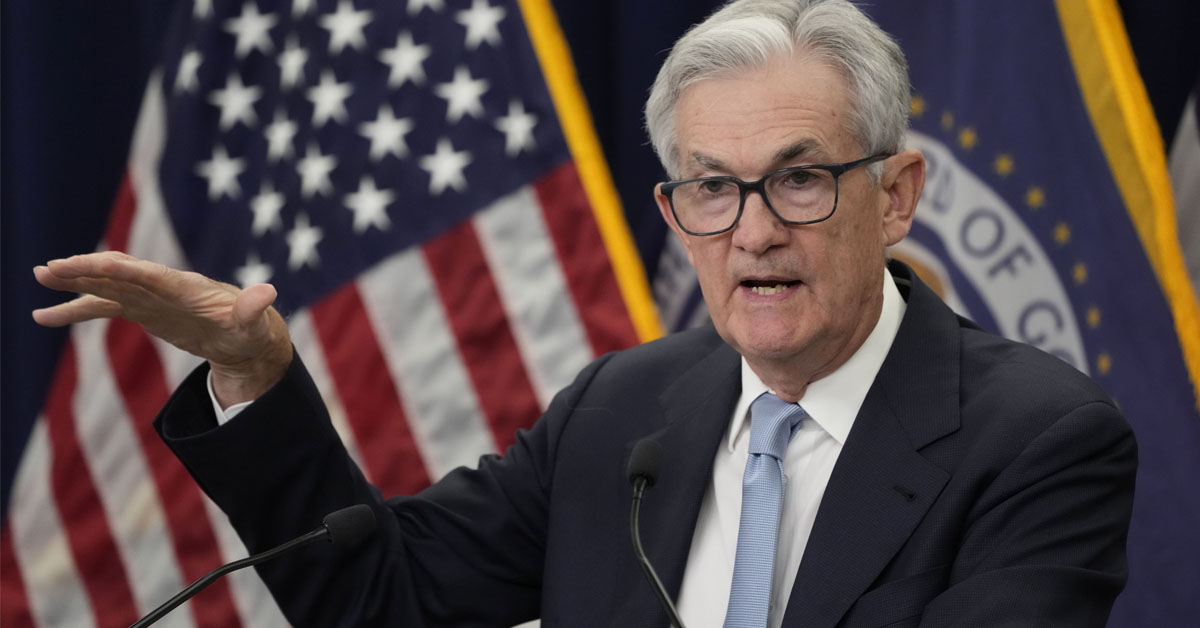The Federal Reserve on Wednesday kept the target range for the federal funds rate at 5.25% to 5.5%, a widely expected move amid stubbornly sticky inflation readings.
The inaction leaves the benchmark rate at its highest point in 23 years as the cooling of consumer prices has lost momentum in 2024. April’s Consumer Price Index report revealed that inflation, while moderated from the red-hot inflation that peaked last year, was at 4.9% year over year, still handily above the Fed’s 2% goal.
The central bank acknowledged as much in the statement released after the Wednesday meeting of its policy-setting Federal Open Market Committee (FOMC). The statement recognized the progress that has been made, replacing comments about inflation goals “moving into better balance” with verbiage saying that those goals “have moved toward better balance over the past year.” But it also added a sentence saying that in recent months, “there has been a lack of further progress toward the Committee’s 2% inflation objective.”
When asked when the rate-lowering cycle will begin, Jerome Powell, chair of the Federal Reserve, has often alluded to the need to reach “greater confidence” that inflation is trending toward 2%. And simply put, “so far this year, the data have not given us that greater confidence,” Powell said.
“It is likely that gaining such greater confidence will take longer than previously expected,” he added. “We are prepared to maintain the current target federal funds rate for as long as appropriate.”
Asked if current conditions would warrant a return to increasing the rate, Powell’s “no” was swift and concise.
“I think it’s unlikely that the next policy rate move will be a hike,” he said. “I would say it’s unlikely.”
For the Fed to consider a rate hike, Powell said that there would need to be “persuasive evidence” that current monetary policy isn’t “sufficiently restrictive to bring inflation sustainably down to 2% over time” — and thus far, the Reserve remains assured that’s not the case.
While widely anticipated, the Fed’s decision remains (no pun intended) deflating for a mortgage industry that initially had hopes for a rate cut by the second quarter of the year. Industry projections now target the FOMC’s September meeting for the long-awaited first cut.
“With inflation data continuing to show a bumpy road toward the Fed’s 2% inflation target, it isn’t surprising that the Fed chose to leave interest rates unchanged and is delaying the prospect of interest rate cuts until later this year,” said Marty Green, principal at mortgage law firm Polunsky Beitel Green. “The question now is whether inflation proves to be so sticky that the Fed decides that rate cuts in 2024 are no longer in the cards and will instead be delayed into 2025.”
While the Fed opted to hold its rates steady, there was one new development from Wednesday’s meeting: The central bank announced that it will reduce the roll-off rate of its Treasury securities from $60 billion per month to $25 billion, beginning in June.
“This means that, while the Fed will not begin selling Treasuries in June, it will be allowing fewer of them to mature,” explained Xander Snyder, senior economist at First American Financial Corp. “It will not alter its roll-off rate for mortgage-backed securities (MBS), which will remain at $35 billion per month.
“Slowing the rate of balance sheet shrinkage, which is what the Fed decided to begin doing in June, equates to a slight loosening of monetary policy. It is, however, a gradual easing, as directionally the Fed is still shrinking its balance sheet by $60 billion per month.”
What does all of this mean for the mortgage industry? The ongoing delay in the lowering cycle remains the biggest takeaway.
“Lower mortgage rates continue to feel more out of reach in this perfect storm of persistent inflation, rising treasury yields, and the Fed’s continued runoff of its MBS holdings,” said Eric Orenstein, senior director at Fitch Ratings.
“While lower interest rates would be preferred for construction markets, residential builders and homebuyers have shown some ability to adapt to current rate levels,” noted Connor Lokar, economist at ITR Economics. “Commercial real estate, however, remains in a tenuous position with waves of refinancing at higher rates still coming in the months ahead.” “We will continue to observe interest trends, but we don’t expect a meaningful dip in mortgage rates for the remainder of the year,” said Selma Hepp, chief economist at CoreLogic. “What is promising, however, is that some markets are showing an increase in inventory, especially on the lower end of home prices. That is the light at the end of the tunnel for the housing market right now.”




